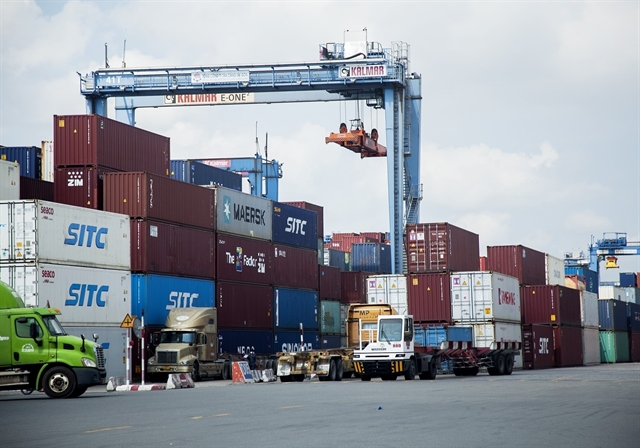 Economy
Economy

 |
| Participants at the forum. — VNA/VNS Photo |
HCM CITY — A forum on seizing opportunities from the Việt Nam-EU Free Trade Agreement (EVFTA) and changes in the logistics industry to support Việt Nam’s exports to the European Union (EU) market, was held by the European-American Market Department under the Ministry of Industry and Trade (MoIT) in HCM City on Monday.
According to Vice General Director of the Department Nguyễn Thảo Hiền stated that 2024 marks the 4th year since EVFTA came into effect. In recent years, the agreement has served as a lever to help Việt Nam and the EU maintain growth momentum in bilateral trade cooperation, despite the negative impacts of the COVID-19 pandemic as well as geopolitical conflicts.
In the first eight months of 2024 alone, bilateral trade between Việt Nam and the EU reached nearly US$45 billion, up 15.8 per cent year-on-year. Việt Nam's exports to the EU amounted to $34.1 billion, a 17.4 per cent increase compared to the same period last year.
Hiền said these figures reflect the economic recovery in the EU and the adaptability of Vietnamese businesses in seizing opportunities brought by the EVFTA, including positive contributions of Việt Nam's logistics sector and its partners.
However, she noted that import-export activities between Việt Nam and the EU are also facing numerous challenges due to the unpredictability of the market, the fragile recovery of consumer demand in the EU, and the ongoing political and military conflicts in several regions showing no signs of easing.
Additionally, export markets, particularly the EU, are increasingly demanding greening of the value chain including production and transportation of goods. In this context, to boost export efficiency, along with efforts made by manufacturing businesses, Việt Nam's logistics sector needs to continue improving infrastructure and operational capacity, and minimising costs to remain competitive.
Chandler So, CEO of GEODIS Việt Nam, said that Việt Nam's participation in many FTAs, such as the Comprehensive and Progressive Agreement for Trans-Pacific Partnership (CPTPP) and the EVFTA has helped boost production growth for exports.
Trade wars and the COVID-19 pandemic have forced manufacturers to diversify their transportation networks, So said, adding that these factors have contributed to Việt Nam's emergence as a leading manufacturing hub in ASEAN.
Carlos Zepeda, a senior maritime economist, said production growth and the related demand for raw materials for production have driven Việt Nam's maritime trade over the past 20 years.
Regional value chain linkages, and low labour costs, have turned Việt Nam into an export base for many multinational companies. This serves as the foundation for promoting the development of Việt Nam's logistics sector to meet the demand for export cargo transportation, he said.
Regarding trade relations with the EU, Zepeda said Việt Nam is emerging as a major supplier of consumer goods and fashion to Europe. The Southeast Asian nation has also positioned itself as a key supplier of other value-added products, becoming the third-largest high-tech goods supplier of Europe after China and the US. It is forecasted that the volume of container trade between Việt Nam and Europe could double by 2050.
Việt Nam needs to make efforts to improve infrastructure by integrating large-scale ports with industrial zones and clusters to maximise efficiency and reduce logistics costs, he noted.
Trần Ngọc Quân, Vietnamese Trade Counselor in the EU and Belgium, said that in addition to the EU's Carbon Border Adjustment Mechanism (CBAM), Vietnamese export firms need to pay attention to the EU's requirements for emissions control in maritime transport, as this could increase international logistics costs.
Việt Nam is currently the EU's 16th biggest trading partner, the 3rd largest exporter, and the 5th largest importer of Europe. The country primarily exports phones, electronic products, footwear, machinery and textiles to the EU. — VNS




